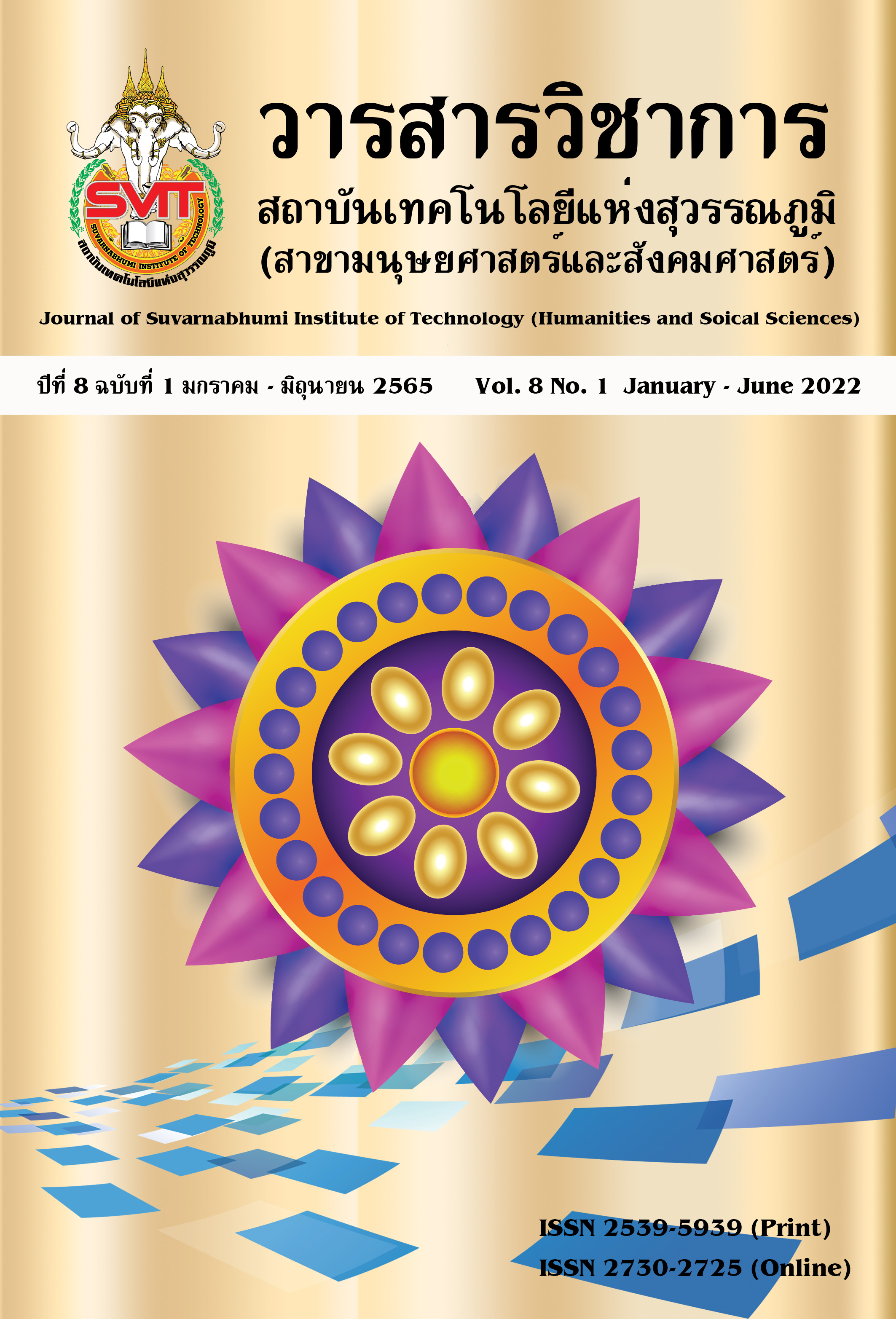BUDDHIST HUMAN CAPITAL MANAGEMENT IN TRIPITAKA
Keywords:
Management, Buddhist Human Capital, TripitakaAbstract
The objectives of this study were (1) to investigate the principles of Buddhism on human capital found in the Tripitaka, (2) to identify the components of human capital management based on the principles of Buddhism as evident in the Tripitaka, and (3) to explain the principles of human capital management based on the principles of Buddhism found in the Tripitaka.
This study employed a qualitative approach. Data were collected from a review of 45 documents from the full Tripitaka, non-participant observations, and structured in-depth interviews with 15 experts on Buddhism and the Tipitaka, and they were analyzed by content analysis.
Major findings: (1) on the principles of Buddhism, Buddhism was said to value births in the human realm because the realm allowed ones to self-manage to strengthen inner potential, but as human-realm births were said to be extremely rare, being born as a human was said to be considered as a contribution to human capital; (2) on the components of human capital management based on the principles of Buddhism, they included (a) personal characteristics or intelligence levels, (b) moral principles or teaching instruments, (c) appropriate timing, (d) teachers, (e) Buddhist methods of teaching, (f) the five Khandhas of body and mind, and (g) Paramita; and (3) on the principles of human capital management based on the principles of Buddhism, they were said to be divided into two parts, including 1) individual management to enhance human capital with aims towards smart and moral humans, and 2) management of human capital as organizational resources for organizational development with aims for public benefits by using the five management systems of (a) moral discipline, (b) power decentralization, (c) Dhammadhipateyya, (d) respect for seniority, and (e) collaborative goal-setting.
References
โกศล เพ็ชรวงศ์. (2543). พระพุทธศาสนากับการพัฒนาคน: ศึกษาเฉพาะกรณี ผู้เข้ารับการฝึกอบรม หลักสูตร“เตรียมผู้บริหารการศึกษา” ของสถาบันพัฒนาผู้บริหารการศึกษาวัดไร่ขิง (ปริญญานิพนธ์ปริญญาดุษฎีบัณฑิต). นครปฐม: บัณฑิตวิทยาลัย มหาวิทยาลัยมหิดล.
ฌาน ตรรกวิจารณ์. (2550). การพัฒนาทรัพยากรมนุษย์เชิงพุทธ (ปริญญานิพนธ์ปริญญาดุษฎีบัณฑิต). กรุงเทพฯ: บัณฑิตวิทยาลัย มหาวิทยาลัยรามคำแหง.
นิสดารก์ เวชยานนท์. (2557). การบริหารทุนมนุษย์เชิงกลยุทธ์ของไทย. กรุงเทพฯ: สถาบันบัณฑิตพัฒน บริหารศาสตร์.
นิสดารก์ เวชยานนท์. (2559). การบริหารทุนมนุษย์เชิงกลยุทธ์เพื่อเพิ่มมูลค่า. นนทบุรี: เดอะ กราฟิโกซิสเต็มส์.
บุญทัน ดอกไธสง. (2551). การจัดการทุนมนุษย์. กรุงเทพฯ: พิมพ์ตะวัน. พระไตรปิฎกภาษาไทยฉบับมหาจุฬาลงกรณราชวิทยาลัยเฉลิมพระเกียรติสมเด็จพระนางเจ้าสิริกิตต์พระบรมราชินีนาถ พ.ศ. 2539.
พระธรรมปิฎก (ป.อ.ปยุตฺโต). (2540). การสร้างสรรค์ปัญญาเพื่ออนาคตของมนุษยชาติ (พิมพ์ครั้งที่ 7). กรุงเทพฯ: สหธรรมิก.
พระเมธีธรรมาภรณ์ (ประยูร ธมฺมจิตฺโต). (2553). พุทธศาสนากับปรัชญา. กรุงเทพมหานคร: อรินทร์ พริ้นติ้งกรุ๊ป.
พระณัฐวุฒิ วุฑฺฒิโก (สัพโส). (2557). การพัฒนามนุษย์ตามหลักพระพุทธศาสนา: การนำเสนอแนวคิดจากพระสุตตันตปิฎก (ปริญญานิพนธ์ปริญญาดุษฎีบัณฑิต). พิษณุโลก: บัณฑิตวิทยาลัย มหาวิทยาลัยนเรศวร.
พิริยะ ผลพิรุฬห์, และปังปอนด์ รักอำนวยกิจ. (2558). ทุนมนุษย์กับผลิตภาพแรงงานในภาคอุตสาหกรรมไทย. กรุงเทพฯ: สำนักงานกองทุนสนับสนุนการวิจัย (สกว.).
ศิริศักดิ์ นันตี.(2556). การบูรณาการหลักการทางพระพุทธศาสนาในการพัฒนาทรัพยากรมนุษย์ (ปริญญานิพนธ์ปริญญาดุษฎีบัณฑิต). กรุงเทพฯ: มหาวิทยาลัยมหาจุฬาลงกรณราชวิทยาลัย.ธรรมาธิราช.
สุพจน์ นาคสวัสดิ์. (2559). การวัดทุนมนุษย์ให้ตรงใจองค์การ. กรุงเทพฯ: เอช อาร์ เซ็นเตอร์.
แสง จันทร์งาน. (2540). วิธีสอนของพระพุทธเจ้า. นครปฐม: มหามกุฎราชวิทยาลัย.
Downloads
Published
Issue
Section
License
Copyright (c) 2022 Suvarnabhumi Institute of Technology

This work is licensed under a Creative Commons Attribution-NonCommercial-NoDerivatives 4.0 International License.
บทความที่ได้รับการตีพิมพ์เป็นลิขสิทธิ์ของวารสารวิชาการ สถาบันเทคโนโลยีแห่งสุวรรณภูมิ
ข้อความที่ปรากฏในบทความแต่ละเรื่องในวารสารวิชาการเล่มนี้เป็นความคิดเห็นส่วนตัวของผู้เขียนแต่ละท่านไม่เกี่ยวข้องกับสถาบันเทคโนโลยีแห่งสุวรรณภูมิ และคณาจารย์ท่านอื่นๆในสถาบันฯ แต่อย่างใด ความรับผิดชอบองค์ประกอบทั้งหมดของบทความแต่ละเรื่องเป็นของผู้เขียนแต่ละท่าน หากมีความผิดพลาดใดๆ ผู้เขียนแต่ละท่านจะรับผิดชอบบทความของตนเองแต่ผู้เดียว





